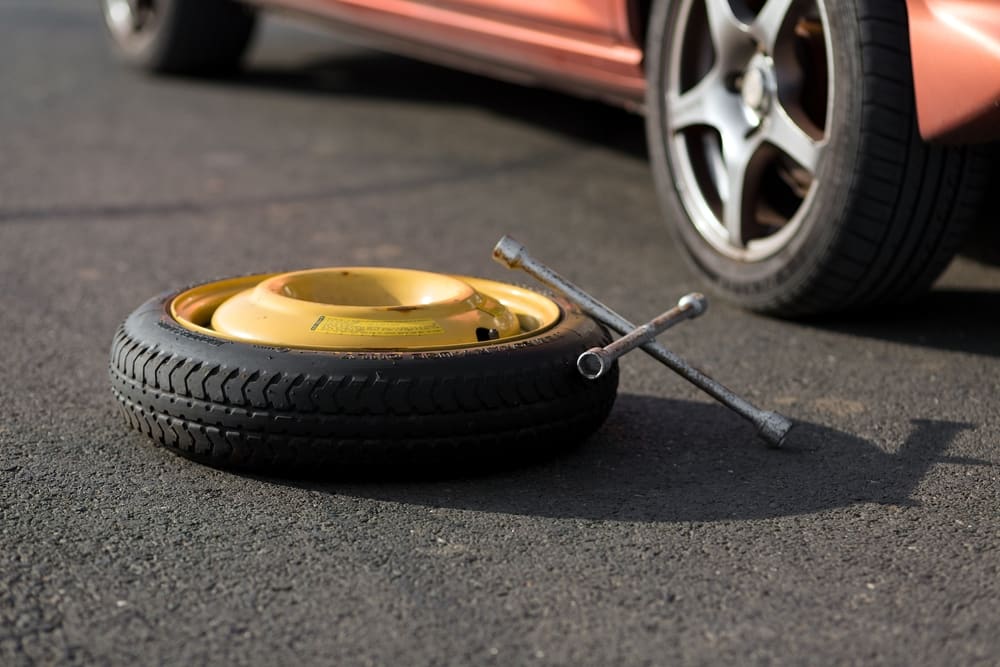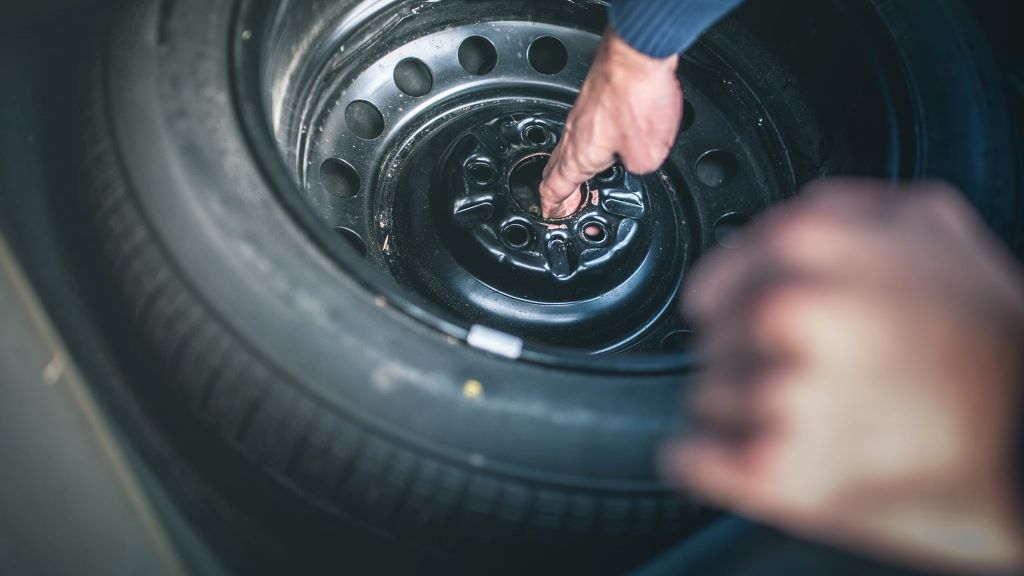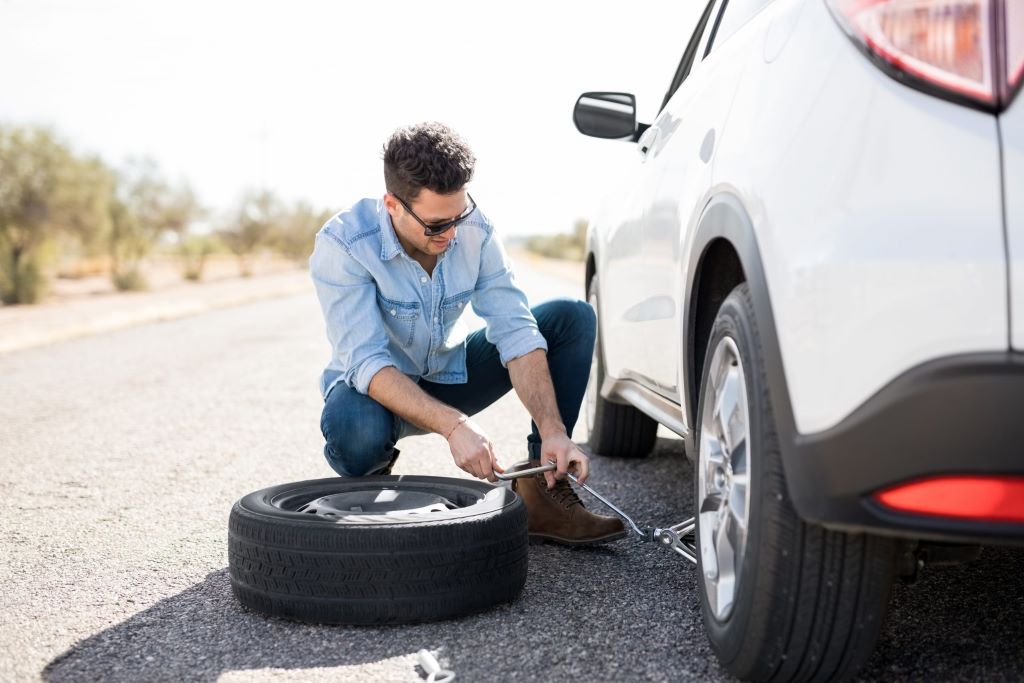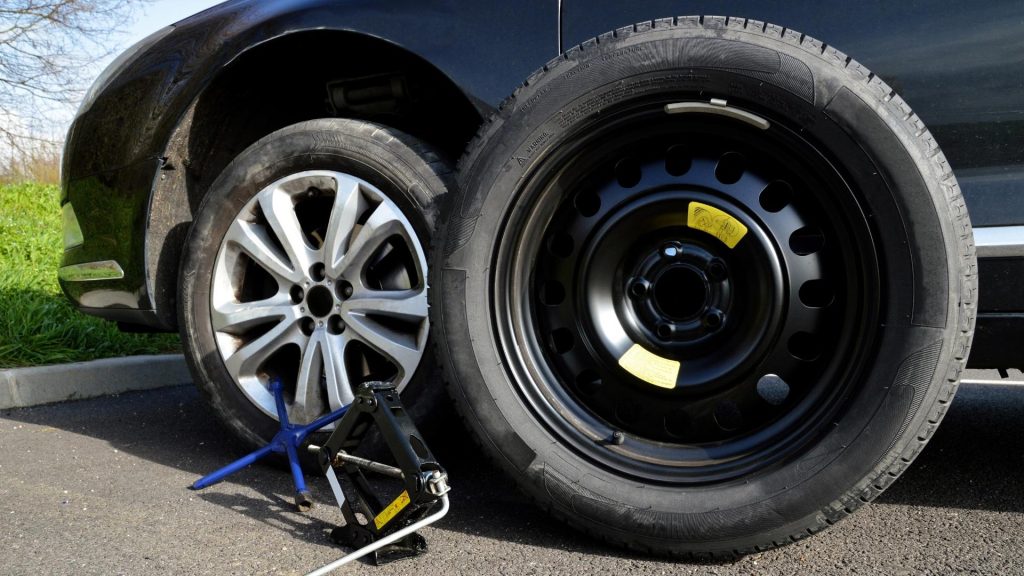A full size spare tire is an extra tire that is the same size and weight as your regular tire. Donuts are smaller and lighter than typical tires and save space. You cannot drive the donut too long (about 112 km) or excessively fast (about 80 km). The choice you make in the full size spare tire vs donut debate depends on the type of car you’re driving. Moreover, it also depends on whether you’d get back on the road and fix the tire later or head to a nearby workshop and fix it immediately.
In short, depending on the make, model, and car type, you may have a spare tire or a donut. These two types of spare tires are not the same. But both can be used when you have a flat tire. Learn more about the difference between spare and donut tires, and feel free to raise any questions if you are interested.
In some circumstances, you will have to deal with flat spare tires in the middle of nowhere if you have to spend a little bit too much time behind the wheel. It makes no difference how cautious you are with your car or how meticulous you are with your car tires. It will only be a matter of time before a flat tire appears and wreaks havoc on your vehicle. When the changing due comes, you’ll almost certainly need to put a spare tire in your car and drive it around.
Contents
Full size spare tire: The details
Having a full size spare tire set means buying a set containing five tires for your car instead of four, ensuring that you always have your regular tires on hand in case of an emergency. The main benefit of having a full-size backup accessory is that it is not a temporary band-aided solution. You can replace the spare tire with a large spare and go on with the day without thinking about the flat tire. Remember to fix that tire, though. If you’re in that situation again, you won’t have time to turn.
Donut tire: The details
These types of tires, often referred to as “donuts” or “space-saving” tires, are generally easier to transport because they are smaller and lighter than the typical tires on your car. A donut is also easy to put in a car because of its small size. As a result, all compact cars, from hatchbacks to sedans, will come with a spare donut. A donut spare tire is also considerably cheaper than a full-size spare because it uses less material (rubber). However, when it comes to temporary spare tires, there are some downsides and safety concerns.
For example, when driving with a donut spare tire, never exceed a driving distance of 112 km. This is because donut tires are narrower and smaller. Therefore, they will not last as long as full-size tires due to the lack of tread. Also, you should never exceed 80 km per hour when using donuts.

Another note when using a donut spare tire is to avoid sudden movements on the road. Because they are so much smaller than regular tires, they spin faster, have a smaller contact area, and produce significantly less traction. Finally, donut tires are designed to be eliminated. You cannot drive on them for longer than the recommended distance and if signs of wear and tear start to show. This is why it is important to have them checked as soon as they are replaced with your patched full-size tires and buy a new one. If they have gone beyond the maximum distance we indicated before, stop using them and replace them immediately.
Keeping a full-size spare in your vehicle, on the other hand, requires the necessary storage space. Ideally, you should include a full-size spare tire in your regular tire rotation so that it wears the same way and at the same rate as the rest of the tire. When/if that tire is raised to a fixed position, this can help you minimize stress on your car and provide balanced handling.
Full Size Spare Tire Vs Donut: What are the differences?
It’s more common to find donuts in sedans or smaller vehicles. Larger vehicles such as trucks or SUVs are more likely to be fitted with full-size spares. Because donuts are so much smaller so they’re ineffective on heavier vehicles but can do the trick for a light sedan.
A full size spare tire will be heavier and can create less drag at the rear of the vehicle, adversely affecting gas mileage. For the most part, arguing about spare parts or donuts depends on the size of your vehicle. Carrying a spare tire in the trunk can also affect gas mileage because you’re carrying more weight.
Some automakers have abandoned the concept of a spare tire entirely, opting instead to use sealants and inflatables. So it’s crucial to know what you get when you buy a new or used car.
Here are some more detailed comparisons in aspects between full-size spare vs donut for your reference.
Size
One of the main differences between a spare tire and a donut is their different sizes. Donuts are smaller than a standard spare tire so they have a smaller road contact area, reducing traction. Because of their size, donuts are often found on smaller vehicles like sedans because they are not as effective on heavier vehicles.
Performance
Full size spare tires can be used like regular tires because they are the same size and weight. Thus, they support the standard weight of the vehicle, maintaining its performance. On the other hand, smaller donuts cannot support the vehicle for long, affecting performance and handling, which is why they need to be replaced as soon as possible.

Driving distance
Driving with donuts for longer distances is unsafe due to their reduced handling and performance.
You should not drive with the spare donut for more than 70 miles, or you will cause damage and excessive wear to the brakes, wheel bearings, and suspension due to the car’s weight. Also, because this tire is light, you could blow another tire or have permanent tire damage. Donuts are trash, which means you shouldn’t use them beyond the recommended time and should replace them as soon as possible.
On the other hand, you can drive longer as long as the tire is inflated with the spare tire. It works similarly to the other three tires and won’t affect your mileage.
Speed
In addition to distance, you also need to watch your speed. Spare tires will not be affected as long as they are in good condition, as you should be able to drive at the speed limit without problems.
However, with a donut, you shouldn’t exceed 50 mph because of its size. These tires are not built to handle higher speeds due to the lack of tread. In addition, they are extremely sensitive to bumps, so you should avoid sudden movements. When driving with donuts, avoid quick maneuvers as they spin faster and have less grip.
Material
Donuts are made of poor-quality rubber which causes them to wear out quickly. Therefore, they cannot handle the road like a standard spare tire. On the other hand, a spare tire is made of the same material as your tire, so it will last longer.
Cost
For cars that don’t come with spare tires, drivers are constantly looking for cheaper alternatives. Compared to a spare tire, a donut tire is much more expensive although it wears out much faster, which is also a problem that worries most car owners.
Typically, donuts can cost from $50 to $250. To find cheaper options, you can check your local tire store or online sites like Amazon.
Storage space
One of the reasons cars are equipped with donuts is because of the storage space. Because they are smaller, they can fit in the trunk of a sedan or hatchback. Spare tires are larger and weigh the same as active tires, so you’ll need enough space to fit them into your car. In addition, these tires increase vehicle weight and affect gas mileage.
FAQs on Full Size Spare Tire Vs Donut
You can drive with spare donuts for how long?
If you have a donut, you shouldn’t drive it more than 70 miles. Space saver does not have enough traction to handle larger distances, so this number should not be exceeded. You should replace them as soon as possible at the tire repair shop to get your car working properly again.
>> SEE MORE: This is How You Can Make Your Tires Last Longer
What should you use between full-size tires and donuts?
The spare tire is ideal if you need to drive long distances as you won’t need to go to the auto shop as it works optimally like the rest of the tires. However, if your car is small with limited space, a donut might be a better option. Although you can’t drive longer, it doesn’t take up too much of your trunk space. Also, it can be a better option than having no spare parts.

Is a spare tire necessary?
If you regularly drive long distances to places where there are not many service stations, you will need a spare tire (this also applies to drivers driving on rough terrain). Full-size spare tires are helpful on these occasions, especially if you have an apartment in the countryside, which may be hundreds of miles from the nearest auto shop.
Therefore, if your car doesn’t have a spare tire from the manufacturer, you can buy one from your local tire store, retailer, or Amazon for safety purposes. In this case, a donut might not be ideal because you can’t drive long distances.
Wrapping Up
We have just scrolled through some key differences between full size spare tire vs donut. Hope you get some helpful insight on this issue after reading our article.
The spare tire is similar to your driving tire and works similarly on the road, while the donut is smaller and intended only for shorter driving distances. If your vehicle has a spare tire, you can continue to drive normally until the remaining tire is repaired. However, with donuts, you need to take them to the nearest tire shop for replacement as soon as possible, to avoid further damage.



